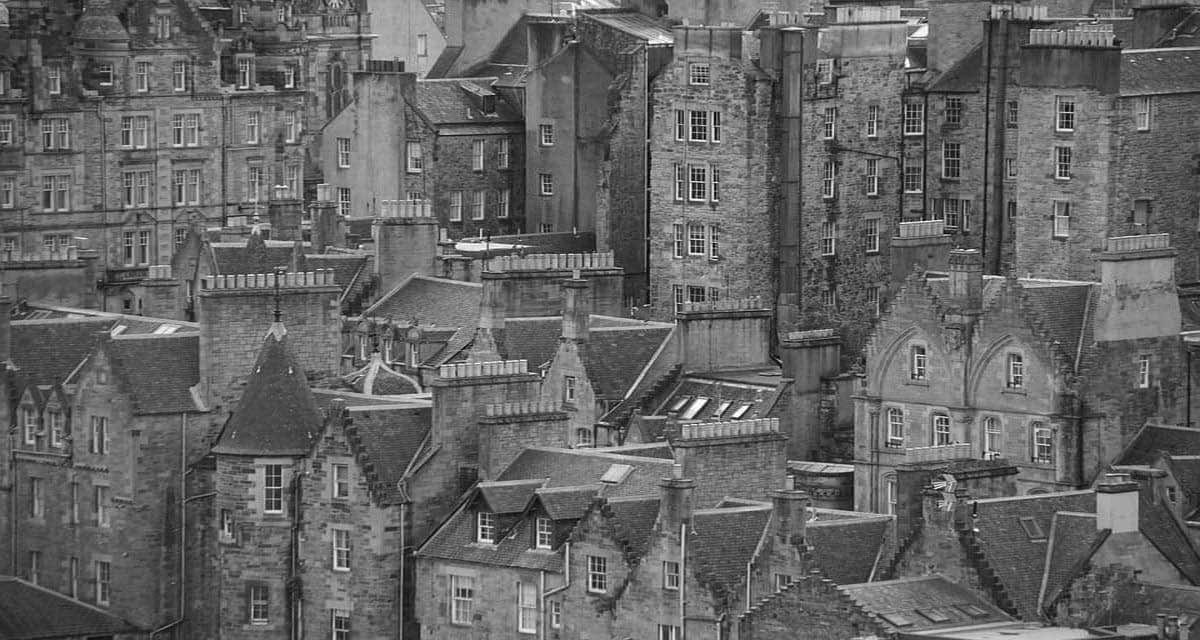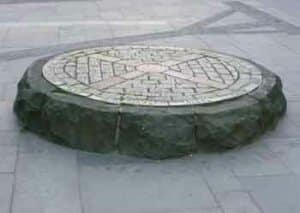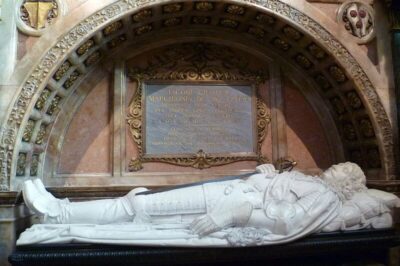
Public executions in Edinburgh reveal a dark side of the city’s history, exposing harsh justice and brutal punishment.
From the Grassmarket and Gallowlee hangings to burnings and beheadings on Castlehill.
These events often drew large crowds, serving as deterrent and spectacle.
This article, one of a series of Edinburgh historical snippets give a brief overview of public executions in Edinburgh.
It looks at some of Edinburgh’s execution sites some of the unfortunate souls who died in terrible fashion. There were so many.
Some went to their deaths after committing a crime, others for their religion or beliefs. Almost certainly some who were not guilty of any crime also went to their deaths.
For those seeking more in-depth information, the article provides links to further authoritative resources.
Many died on the gallows or under the executioner’s axe or sword, others were burned. Yet more were beheaded by the fearsome maiden an early form of the guillotine introduced to Edinburgh in the mid 16th century.
However, there were those whose execution was not the end of the grisly process or just the beginning either for that matter.
In a small number of cases, some in Edinburgh and some elsewhere in Scotland, records show that a hand was severed from the body before execution.
More Edinburgh snippets
Some high-profile individuals were hung, drawn and quartered with various body parts being sent for display in towns throughout Scotland as a warning to others.
In some cases, the cadaver was sent to the University of Edinburgh for dissection in an anatomy class.
Where were public executions in Edinburgh held?
The sites listed here were just a few of the places of public execution in Edinburgh.
Grassmarket Executions
Edinburgh World Heritage say that more than 100 people were executed in the Grassmarket in the 1680s. A favourite spot as it turned out, particularly between 1660 and 1784.
A Grassmarket execution often followed a procession from the Tolbooth. Today a memorial stone marks the spot where Covenanters were hanged.
Interestingly, following execution, some were taken to nearby Magdalen Chapel to be dressed in their grave clothes.
“The Grassmarket gained a sombre reputation as the site of numerous public executions during the 16th to 18th centuries.”
Edinburgh World Heritage
The Gallowlee
Usually described as being between Edinburgh and Leith, the Gallowlee was probably located on what is today’s Leith Walk (Shrubhill).
Although the gibbet was used traditionally, there were times when the authorities used the frame to hang the bodies in chains following their execution elsewhere.

On occasions, rather than leave a rotting corpse, the bodies were removed from the gibbet and spirited away by often unknown perpetrators to be disposed of elsewhere.
Sir Walter Scott said of the Gallowlee that it was, “not the usual place of execution but the most flagrant criminals were generally hung there in chains.”
The Mercat Cross
The Mercat Cross which lies close to St Giles’ Cathedral was the traditional place for merchants to gather, for public proclamations and Edinburgh public executions.
Old Calton Jail
Calton Jail was a grim place by all accounts. Constructed to replace the old Tollbooth, the jail stood on a site close to what is today, St Andrews House, home of the Scottish Government (Not Scottish Parliament).
It seems that some of the executed, including the last woman to be hanged in Edinburgh, was buried on the prison site under what is now the car park of St Andrews House.
Castlehill
Castlehill, the site of Edinburgh Castle’s esplanade was often used for public executions.
Some poor souls were hanged, drawn and beheaded but many, perhaps hundreds of mostly women accused of witchcraft, were burned.
Some were strangled before entering the fire. The fearsome Maiden was also used on occasions.
At the foot of the esplanade, a memorial, known as the Witches Well is a poignant reminder of all those executed.
Edinburgh public executions: 11 who died
Some may link to feature articles on Truly Edinburgh or other authoritative sites to provide some general background information about the event or the times it happened.
Some of the names on this list have almost become part of Edinburgh folklore a few others made their mark not because they were publicly executed but because they made their name in other ways.
The hope is that you will want to do further research to find out more.
George Bryce hanged 1864
So, beginning with the final execution, one commonly listed as George Bryce AKA the Ratho murderer. He was executed on 21 June 1864 following his murder of a young woman.
Bryce mounted a scaffold erected at the corner of George IV Bridge and the Lawnmarket, part of the Royal Mile. A series of brass plaques mark the site.
Jessie King hanged 1889
At Edinburgh High Court in February 1889, jurors found Jessie King guilty of the murder of three of her adopted babies.
Thomas Pearson her partner in life and almost certainly the man who devised the ‘adoption scheme’ walked away and died in Glasgow the following year.
Jessie was Illiterate, vulnerable and perhaps with mental health issues.
She was branded a ‘baby farmer’, a process where babies were handed over to another for a fee. We will probably never know how much money changed hands.
In March, King, the last woman hanged in Edinburgh, was executed in Calton Jail and buried under what is now the car park of the Scottish Government’s St Andrews House.
The Dangerous Women Project says more about this wretched and very sad story.
William Burk hanged 1829
William Burke, one of Edinburgh’s notorious killers, who sold his victim’s corpses for dissection was hanged on the Lawnmarket in January 1829.
Burke’s body was dissected by the University of Edinburgh’s Professor Alexander Munro, his skeleton went to the University’s Anatomical Museum where it remains.
His accomplice William Hare escaped to England. The circumstances surrounding his death remain a matter of debate.
John Dempsey hanged 1820
John Dempsey a private soldier in the 13th Regiment of Foot based at Greenock was tried for murder at Edinburgh High Court and hanged at the Lawnmarket on 13 December 1820.
A subsequent Broadside said that His body was delivered to the “Professor of Anatomy [University of Edinburgh]” for dissection.
This Broadside held at the National Library of Scotland says more about the case.
Thomas Aikenhead hanged 1697
Thomas Aikenhead a young University of Edinburgh student, was charged under the Blasphemy Act and sentenced to death at Edinburgh High Court.
This may well have been nothing more than an indiscretion of a young man debating freely with fellow students. The full story may never be known.
He was incarcerated in the Tollbooth and hanged at the Gallowlee in January 1697, the last person executed for blasphemy in Britain.
A Broadside account held in the National Library of Scotland says “Thomas Aikenhead for denying the Trinity and the authority of the Scriptures and for maintaining the eternity of the world was found guilty and sentenced…To be taken to the Gallowlee…”
Agnes Finnie strangled and burned on Castlehill 1645
Agnes Finnie was an Edinburgh shopkeeper, perhaps also a moneylender. By all accounts, she was a woman with a temper.
Accused in court of being “in company with the devil, in consulting wi him,” she was convicted of being a witch and imprisoned in the Tollbooth.
Her awful sentence was strangulation and burning on Castlehill. Her notoriety probably makes her Edinburgh’s best-known ‘witch’.
The Survey of Scottish Witchcraft Database has this entry on Agnes Finnie.
James Douglas 4th Earl of Morton beheaded with the Maiden 1581
James Douglas, one time Lord Chancellor of Scotland was one of four regents to the young James VI, son of Mary Queen of Scots.
He was accused of involvement in the plot to kill Mary’s husband Lord Darnley along with numerous murky deeds associated with the division created by supporters of James on one side and his mother on the other.
He was tried and convicted at the Tollbooth and was initially sentenced to be hanged. James VI had other ideas and demanded he should be executed by the Maiden. (an early form of the guillotine).
This page from the National Museum of Scotland says more about Douglas and the Maiden.
James Graham, Marquis of Montrose hanged Mercat Cross 1650

James Graham, Marquis of Montrose, recognised as one of Scotland’s greatest soldiers was a signatory to the National covenant of 1638.
Like many of his time, his allegiances ebbed and flowed in the political and religious turmoil of the time.
Ultimately disavowed by Charles he II was hanged at the Mercat Cross, beheaded and quartered with parts of his body distributed to other towns around Scotland.
A memorial to the Marquis lies in St Giles’ Cathedral.
Robert Watt hanged and beheaded 1794
In October 1794 Robert Watt, an Edinburgh wine merchant was the first person tried for high treason in Scotland (Treason Act 1708).
Watt was a leading member of the Society of the Friends of the People, an organisation which demanded radical parliamentary reform.
To raise funds for the Society he tried to seize Edinburgh Castle and imprison some of the city’s top law and banking officials. He was found guilty of “organising a plot for a general rising in Edinburgh…”
He was hanged and beheaded at the Tollbooth.
David Downie
On trial with Watt was David Downie an Edinburgh goldsmith who escaped the hangman’s noose but received one year in jail before being transported to America.
Rather curiously it seems that American president Robert Reagan was a distant descendant.
Sir Walter Scott who sat through Downie’s trial said that while approving of the outcome of Robert Watt’s trial he said, “It’s a matter of general regret that his associate Downie should have received a reprieve…”
Philip Stansfield hanged 1688
A court found Philip Stansfield guilty of killing his father Colonel James Stansfield an officer in Oliver Cromwell’s army.
It seems that the execution on 15 February 1688 at the Cross of Edinburgh (Mercat Cross) did not go as planned and the hangman had to step in and strangle Stansfield to ensure his sentence was carried out.
Philip Stansfield’s body was taken to the Gallowlee to hang in chains, It was twice removed and twice re-hung by the authorities.
- Robert Louis Stevenson’s wonderful book Edinburgh Picturesque Notes: Chapter 5 has a fascinating, although a little gruesome, paragraph headed, Hanged at the Gallowlee.
Further information on public executions in Edinburgh
Finding additional information on public executions in Edinburgh does take a determined researcher.
However, the fascinating and authoritative Capital Punishment and the Criminal Corpse in Scotland, 1740–1834 by Rachel E. Bennett (University of Warwick). This Open Access publication is a great place to start.
Note
The Broadsides mentioned here were known as ‘street literature’. While they were commonly used to announce public executions in Edinburgh they were also used for royal proclamations and other official notices.
They were usually placed in public places and became increasingly popular as more people learned to read.
The National Library of Scotland has a collection of broadsides, many available, with transcription, online.